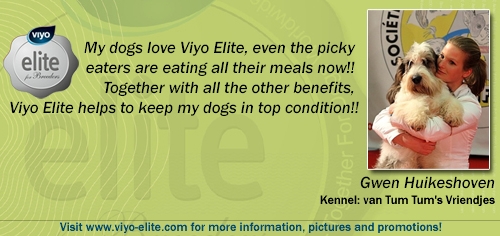Dog shedding occurs in nearly all dogs and is a natural process of eliminating (shedding)
dead hair for a couple of reasons – one, to allow a new coat to come in, and two,
for seasonal changes in temperature. There is no such thing as a non-shedding dog,
unless you have a completely hairless dog, such as the American Hairless Terrier,
however shedding varies greatly from breed to breed. Why this difference between
breeds? The answer lies in the growth rate of the hair (3 cycles: anagen, catagen
and telogen), which is based on genetics, nutrition and environment.
Dog shedding is a factor for two major reasons for dog owners: allergies and the
time it takes to clean up hair that has shed.
Dog shedding is influenced by these three dog coat characteristics:
- Different types of dog coats: hairless, presence of undercoat.
- Different degrees of curl & wave in dog coats: wavy, wirehaired, and straight.
- Different dog coat lengths: short, medium, and long.
"Very light shedders" breeds are usually the breeds that need to be clipped, stripped
and/or scissored. One of the reasons for dogs shedding very large quantities of
hair is that they may belong to a breed that is “double coated” like for example
Siberian Husky, Alaskan Malamute, Deutscher Spitz or Pyrenean Mountain Dog. This
means they have an undercoat and the top layer of hair sheds more frequently and
more profusely than it does with dogs with a normal layer of hair. A common misconception
amongst people is that longhaired dogs shed more hair than shorthaired ones. Then
there is also the phenomenon of seasonal shedding for some breeds. Certain varieties
of dogs shed their winter coats in the spring and if you are the owner of one such
breed, you will have to be prepared for large-scale shedding at these times of the
year.
In addition to dog coat characteristics, many other factors influence dog shedding:
- Sunlight and temperature: day length triggers growth of a new coat and shedding
of the old coat. Outdoor dogs usually shed their thick undercoat in the spring to
prepare for warmer weather. Many indoor living dogs experience increased continuous
dog shedding and decreased annual dog shedding.
- Health: deworm your dog regularly and treat skin infections properly to maintain
healthy skin and coat and decrease shedding.
- Allergies: allergic dogs (fe flea and tick infestation) shed more.
- Nutrition: think about to supplement all nutrients positively influencing skin and
coat health: essential vitamins, minerals, amino-acids and fatty acids (omega 6/3).
- Cleanliness; brush your dog regularly and use adapted shampoo (not for humans !).
- Hormones affectign skin and coat health: thyroid hormones, cortisol, testosterone,
estrogen, progesterone, and growth hormone.
- Pregnancy and lactation: deplete calcium, minerals and energy stores so that many
dogs shed heavily after the pups are born and are being nursed.
When you have a dog with excessive shedding, think about: skin diseases (Staphylococcus
infection, ringworm, allergies (flea, tick and lice)), pyoderma), Cushing’s disease
and autoimmune diseases as pemphigus complex, pemphigus vegetans, pemphigus foliaceous,
pemphigus erythematosis and Vogt-Koyanagi-Harada-like syndrome.
What can you do to reduce shedding?
Grooming is the key. Brushing your dog once a day will greatly reduce the unwanted
hair all over your clothes, carpet and furniture, especially during shedding season.
Feed a high quality diet and use supplements containing all essential nutrients
for optimal skin and coat health (vitamins, minerals, amino acids and omega 6/3
fatty acids).
Summary
Skin and coat health can be helped with supplementation of a complete formulation
containing all essential vitamins, minerals, amino-acids and fatty acids. To obtain
the best absorption and efficacy of those nutrients, a liquid and complete formulation
as Viyo Elite is the best guarantee.
Non or Low Shedding Dog Breeds - Hypoallergenic Dogs
Affenpinsher
Airedale Terrier
American Hairless Terrier
Australian Terrier
Basenji
Bedlington Terrier
Bergamasco
Bichon Frise
Black Russian Terrier
Bolognese
Border Terrier
Boston Terrier
Bouvier des Flandres
Brussels Griffon
Cairn Terrier
Cesky Terrier
Chacy Ranior
Chi-Poo
Chinese Crested
Cockapoo
Coton De Tulear
Dachshund
Dandie Dinmont Terrier
Giant Schnauzer
Glen of Imaal Terrier
Greyhound
Hairless Khala
Havanese
Irish Terrier
Irish Water Spaniel
Italian Greyhound
Kerry Blue Terrier
Komondor
Lagotto Romagnolo
Lakeland Terrier
Lhasa Apso
Lowchen
Maltese
Malti-Poo
Manchester Terrier
Mi-Ki
Miniature Schnauzer
Norfolk Terrier
Norwich Terrier
Peruvian Inca Orchid
Petit Basset Griffon Vendeen
Poodle (all types)
Poos
Portugese Water Dog
Puli
Scottish Terrier
Sealyham Terrier
Shih Tzu
Silky Terrier
Soft Coated Wheaten Terrier
Spanish Water Dog
Standard Schnauzer
Tibetan Terrier
Welsh Terrier
West Highland White Terrier
Whippet
Wire Haired Fox Terrier
Wire Haired Pointing Griffon
Xoloitzcuintli
Yorkshire Terrier
Heavy Shedding Dog Breeds
Alaskan Malamute
Akita
Australian Shepherd
Belgian Sheepdog
Collie
English Toy Spaniel
German Shepherd
Great Pyrenees
Keeshond
Newfoundlander
Pomeranian
Saint Bernard
Samoyed
Siberian Huskey
Shetland Sheepdog
DVM, Dr Wim Van Kerkhoven –
